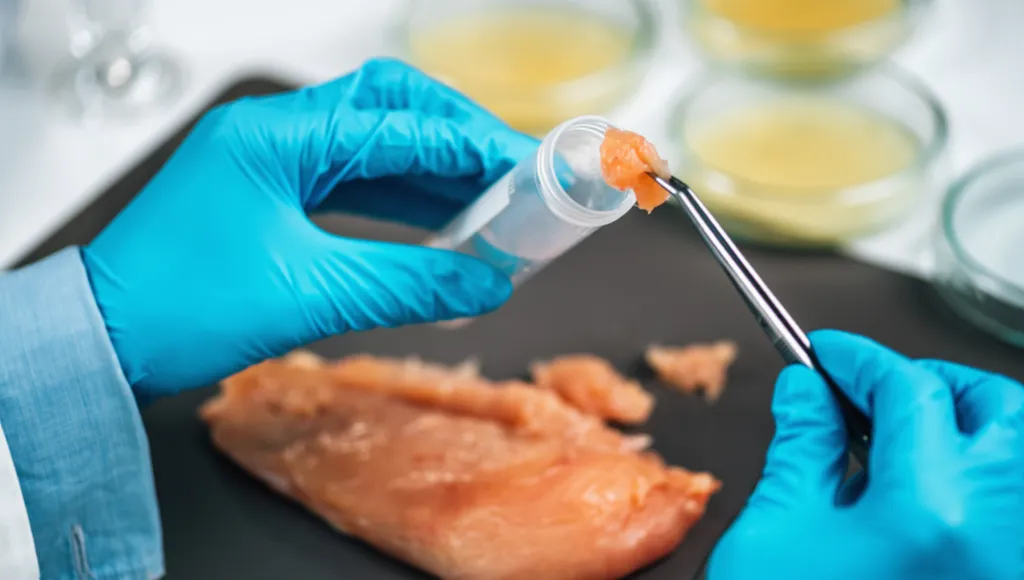In the heart of the poultry industry, a silent battle rages in the bedding beneath billions of broiler chickens. This battleground is broiler litter, and the adversary is a persistent pathogen: Salmonella. A recent study led by Adelumola Oladeinde from the U.S. National Poultry Research Center, USDA-ARS in Athens, Georgia, has shed new light on the ecological dynamics of Salmonella in broiler litter, with implications that could reshape food safety strategies and commercial poultry production.
The study, published in the journal *Applied and Environmental Microbiology* (translated to English as “Applied and Environmental Microbiology”), investigated the prevalence and persistence of Salmonella in broiler litter from two commercial broiler houses. The research team employed a combination of culture enrichment methods, quantitative polymerase chain reaction, antimicrobial susceptibility testing, and whole-genome sequencing (WGS) to unravel the complexities of Salmonella’s survival in this environment.
One of the most compelling findings was the influence of litter moisture on the prevalence of viable Salmonella. Using machine learning algorithms, the researchers developed a Decision Tree Classifier model that identified moisture in the caked part of the litter as the most significant environmental parameter for predicting Salmonella presence. “This suggests that interventions aimed at reducing litter moisture could potentially curtail the persistence of Salmonella in pre-harvest environments,” Oladeinde explained.
The study also revealed that certain strains of Salmonella, particularly Typhimurium, Infantis, and Kentucky, dominated the litter. These strains harbored large self-conjugative plasmids encoding fitness factors for iron siderophore production. Siderophores are molecules that help bacteria acquire iron, a crucial nutrient for their growth and survival. The researchers found that exposure to iron-limiting and copper-enriched culture media affected Salmonella growth, suggesting that trace metals may select for siderophores harbored on plasmids.
The commercial implications of this research are substantial. Broiler chicken meat is the most consumed protein worldwide, and global poultry imports are projected to reach 17.5 million tons by 2031. The top global producers and exporters of chicken, Brazil and the United States, often reuse litter multiple times. This practice, while economically efficient, creates an environment where pathogens like Salmonella can thrive and infect chickens, posing a significant food safety risk.
Oladeinde’s team suggests that reducing litter moisture could be a key strategy in controlling Salmonella prevalence. However, they also emphasize that a complete eradication of persisting Salmonella strains will require novel, innovative, and multifaceted approaches. This could open avenues for the development of new technologies and interventions in the poultry industry, potentially shaping future food safety standards and practices.
As the world’s appetite for chicken continues to grow, so does the need for sustainable and safe poultry production practices. This research not only advances our understanding of Salmonella ecology but also paves the way for innovative solutions that could transform the industry. In the words of Oladeinde, “Understanding the environmental and genetic selective pressures that explain why certain Salmonella strains persist on broiler farms more than others is crucial for developing effective control strategies.” This study is a significant step in that direction, offering hope for a safer and more efficient future in poultry production.

